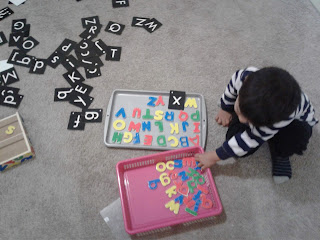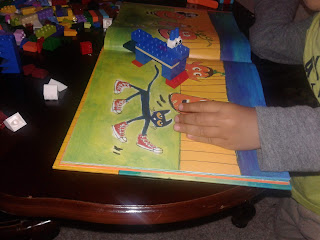In this post, I will be sharing the activities which I did at home with children for their Islamic education. For me, Islamic education for kids is divided into three categories.
Firstly, exposing children to the Islamic environment and practice is integral for developing their Muslim identity. It is important for us to be good role models for them. After all, children learn from their elders. So, whatever we want our children to learn, we need to work on it ourselves. If we want them to remember Allah at all times, we should have a habit of saying adhkar and duas ourselves. My daughter was able to memorize many duas and surahs just by listening to me and reciting with me. Similarly, if we want them to learn to control anger then we should demonstrate anger control and patience ourselves. Moreover, praying Salah together is a beautiful family activity which promotes the importance and love of Salah in children from a very young age. Also, taking the children to masjid and Islamic classes/ conferences helps them to feel the beauty of Adhan, salah in congregation and being part of a Muslim community.
Secondly, learning to read Arabic is an important skill for children to learn as soon as they turn 3. I started by introducing Arabic letters gradually using flashcards. I reinforced their learning by Arabic letter crafts and Arabic letter Nasheeds. After Arabic letters, I taught my daughter different forms of each letter (when written at the beginning, middle and end of a word). I used Arabic alphabet blocks by edu4fun (which I ordered from Amazon) and videos by 'Arabic alphabet with Zakaria' for hands-on and visual/auditory learning respectively. When my daughter turned 4, she started going to Madrassah where she started learning to read Arabic using Noorani Qaidah. Having a strong foundation in recognizing Arabic letters and their forms helped her to finish her Qaidah in six months. Now she is learning to recite the 30th Juzz of Quran following the rules if tajweed. She loves reciting Quran Mashallah.
Thirdly, the final part for Islamic education includes teaching children about Allah, angels, Prophets, Seerah, meaning of Quran and Hadith, Jannah and Jahannum, etc.
I started with some of the beautiful names of Allah such as Allah, Al Khaliq, Ar-Rahmaan, Ar-Raheem, Ar-Raaziq, Al-Qadeer, As-Samee' and Al-Baseer. We decorated names of Allah with gem stones and dot stickers. We learned simple details about each name of Allah. My daughter greatly benefited from these hands-on/ tactile activities and crafts.
I could not find Islamic books in simple English for my 4.5 year old. So I wrote simple passages about Allah, angels, Prophets, pillars of Islam etc. followed by comprehension questions. This also helped her improve her reading and writing skills. During summer vacations, I taught word to word translation and brief explanation of surah Fatiha to a group of 7 children. We made our own books on Surah Fatiha in which we recorded everything we learned.
We focused on the meaning of siraatul mustaqeem and played a simple cooperative game to reinforce this concept. We made paths (one of them being the straight path leading to Jannah while the others were ending up in Hellfire) on the carpet with the painter's tape. Children took turns to walk on the paths. The goal for every child was to reach Jannah in the end by doing more good deeds and by doing istighfaar after every bad deed. During our summer camp, children wrote on Islamic topics like Ramadan, Eid and thanking Allah and then they shared their writings with others.
In Surah Fatiha, we make dua to Allah to guide us to the path of anamta alayhim (the people whom Allah blessed). So after completing surah Fatiha, we started learning about Prophets, which I will share about in my next post inshallah.
Firstly, exposing children to the Islamic environment and practice is integral for developing their Muslim identity. It is important for us to be good role models for them. After all, children learn from their elders. So, whatever we want our children to learn, we need to work on it ourselves. If we want them to remember Allah at all times, we should have a habit of saying adhkar and duas ourselves. My daughter was able to memorize many duas and surahs just by listening to me and reciting with me. Similarly, if we want them to learn to control anger then we should demonstrate anger control and patience ourselves. Moreover, praying Salah together is a beautiful family activity which promotes the importance and love of Salah in children from a very young age. Also, taking the children to masjid and Islamic classes/ conferences helps them to feel the beauty of Adhan, salah in congregation and being part of a Muslim community.
Secondly, learning to read Arabic is an important skill for children to learn as soon as they turn 3. I started by introducing Arabic letters gradually using flashcards. I reinforced their learning by Arabic letter crafts and Arabic letter Nasheeds. After Arabic letters, I taught my daughter different forms of each letter (when written at the beginning, middle and end of a word). I used Arabic alphabet blocks by edu4fun (which I ordered from Amazon) and videos by 'Arabic alphabet with Zakaria' for hands-on and visual/auditory learning respectively. When my daughter turned 4, she started going to Madrassah where she started learning to read Arabic using Noorani Qaidah. Having a strong foundation in recognizing Arabic letters and their forms helped her to finish her Qaidah in six months. Now she is learning to recite the 30th Juzz of Quran following the rules if tajweed. She loves reciting Quran Mashallah.
Arabic letters made with pipe cleaners and pom poms promotes sensory learning.
My 3-year old reviewing the first five letters using the flashcards.
My 5-year old making Arabic words using Arabic letter cubes.
More practice of recognizing different forms for Arabic letters
I started with some of the beautiful names of Allah such as Allah, Al Khaliq, Ar-Rahmaan, Ar-Raheem, Ar-Raaziq, Al-Qadeer, As-Samee' and Al-Baseer. We decorated names of Allah with gem stones and dot stickers. We learned simple details about each name of Allah. My daughter greatly benefited from these hands-on/ tactile activities and crafts.
Learning about Allah
Learning about other names of Allah
I could not find Islamic books in simple English for my 4.5 year old. So I wrote simple passages about Allah, angels, Prophets, pillars of Islam etc. followed by comprehension questions. This also helped her improve her reading and writing skills. During summer vacations, I taught word to word translation and brief explanation of surah Fatiha to a group of 7 children. We made our own books on Surah Fatiha in which we recorded everything we learned.
We focused on the meaning of siraatul mustaqeem and played a simple cooperative game to reinforce this concept. We made paths (one of them being the straight path leading to Jannah while the others were ending up in Hellfire) on the carpet with the painter's tape. Children took turns to walk on the paths. The goal for every child was to reach Jannah in the end by doing more good deeds and by doing istighfaar after every bad deed. During our summer camp, children wrote on Islamic topics like Ramadan, Eid and thanking Allah and then they shared their writings with others.
Introducing Surah Fatiha
Surah Fatiha books made by children and our 'suratul mustaqeem' cooperative game
My sample writing and children's writings about Ramadan and Eid
Writing about 'Why should we thank Allah?'
In Surah Fatiha, we make dua to Allah to guide us to the path of anamta alayhim (the people whom Allah blessed). So after completing surah Fatiha, we started learning about Prophets, which I will share about in my next post inshallah.


































